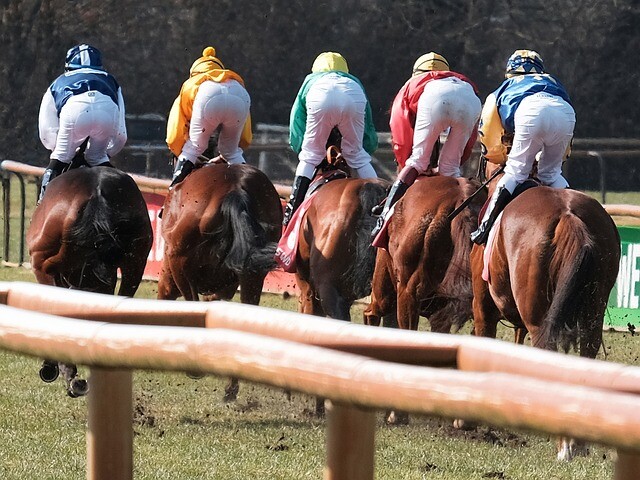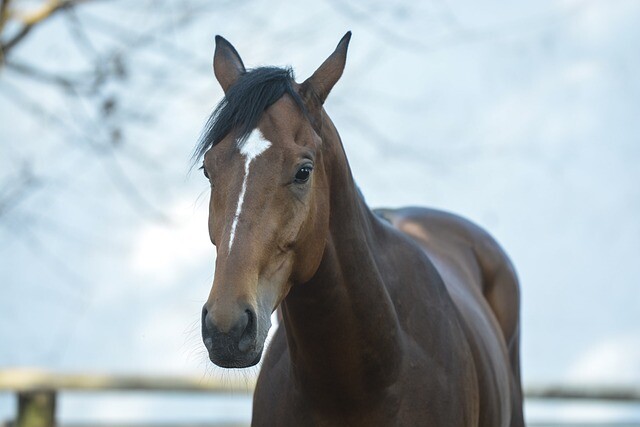Which races are the best trials for the St. Leger Stakes?
 Established on Cantley Common, Doncaster in 1776 and moved to its current location, on nearby Town Moor, in 1778, the St. Leger Stakes is the oldest of the five British Classics. Run annually over a distance of 1 mile, 6 furlongs and 115 yards in September, it is also the longest and the latest on the Flat racing calendar. While not an out-and-out test of stamina, the St. Leger Stakes may push three-year-old colts and fillies, many of whom will not have raced beyond a mile and a half, close to, or beyond, their limit of endurance.
Established on Cantley Common, Doncaster in 1776 and moved to its current location, on nearby Town Moor, in 1778, the St. Leger Stakes is the oldest of the five British Classics. Run annually over a distance of 1 mile, 6 furlongs and 115 yards in September, it is also the longest and the latest on the Flat racing calendar. While not an out-and-out test of stamina, the St. Leger Stakes may push three-year-old colts and fillies, many of whom will not have raced beyond a mile and a half, close to, or beyond, their limit of endurance.
Of course, horses mature and strengthen as the season goes by and may have a an abundance of stamina, as yet untested, in their pedigrees, so it does not necessary follow that a horse that has never previously won over an extended mile and three-quarters cannot do so on St. Leger Day. For example, four of the last ten St. Leger winners, namely Kingston Hill (2014), Capri (2017), Kew Gardens (2018) and Hurricane Lane (2021), ran in the Derby, over a mile and a half at Epsom, and Capri and Hurricane Lane went on to win the Irish Derby, over the same distance, at the Curragh.
The second colts’ Classic aside, several other races have proved informative trials for the St. Leger during the past decade. The Queen’s Vase, run over 1 mile, 6 furlongs and 34 yards at Royal Ascot in June, has produced three St. Leger winners, in the form of Leading Light (2013), Kew Gardens (2018) and Eldar Eldarov (2022), all of whom won at the Royal meeting. The latter pair also ran in the Grand Prix de Paris, over a mile and a half at Longchamp, the following month, as did the aforementioned Hurricane Lane. Kew Gardens also finished second in the Great Voltigeur Stakes, also over a mile and half, at York and Logician (2019) won that race en route to further glory in the St. Leger.
 Not to be confused with the race of the same name run at Bunbury Racecourse in Western Australia, the Bunbury Cup is a historic, seven-furlong handicap run at Newmarket Racecourse, Suffolk, in the East of England. The race commemorates Sir Thomas Charles Bunbury, ‘Perpetual Chairman’ of the Jockey Club and co-founder of the Derby, and has been a fixture of the July Festival at ‘Headquarters’ since 1962.
Not to be confused with the race of the same name run at Bunbury Racecourse in Western Australia, the Bunbury Cup is a historic, seven-furlong handicap run at Newmarket Racecourse, Suffolk, in the East of England. The race commemorates Sir Thomas Charles Bunbury, ‘Perpetual Chairman’ of the Jockey Club and co-founder of the Derby, and has been a fixture of the July Festival at ‘Headquarters’ since 1962. Of course, in Britain, the Fillies’ Triple Crown consists of the two Classic races restricted to fillies, namely the 1,000 Guineas at Newmarket and the Oaks at Epsom, and the fifth and final Classic of the season, the St. Leger at Doncaster. Sun Princess did not, in fact, win the Fillies’ Triple Crown, but did win both the Oaks and St. Leger.
Of course, in Britain, the Fillies’ Triple Crown consists of the two Classic races restricted to fillies, namely the 1,000 Guineas at Newmarket and the Oaks at Epsom, and the fifth and final Classic of the season, the St. Leger at Doncaster. Sun Princess did not, in fact, win the Fillies’ Triple Crown, but did win both the Oaks and St. Leger. Obviously, the word ‘ticket’, in the sense of a piece of paper or cardboard that serves as evidence that the holder is entitled to a certain right, can apply to various items inside and outside the world of horse racing. Indeed, readers of a certain age may nostalgically recall the distinctive, brightly-coloured betting tickets that were handed out by bookmakers in the days before the on-course market became a shadow of its former self.
Obviously, the word ‘ticket’, in the sense of a piece of paper or cardboard that serves as evidence that the holder is entitled to a certain right, can apply to various items inside and outside the world of horse racing. Indeed, readers of a certain age may nostalgically recall the distinctive, brightly-coloured betting tickets that were handed out by bookmakers in the days before the on-course market became a shadow of its former self.